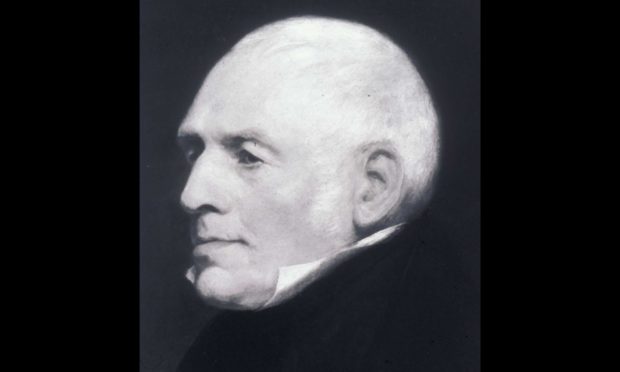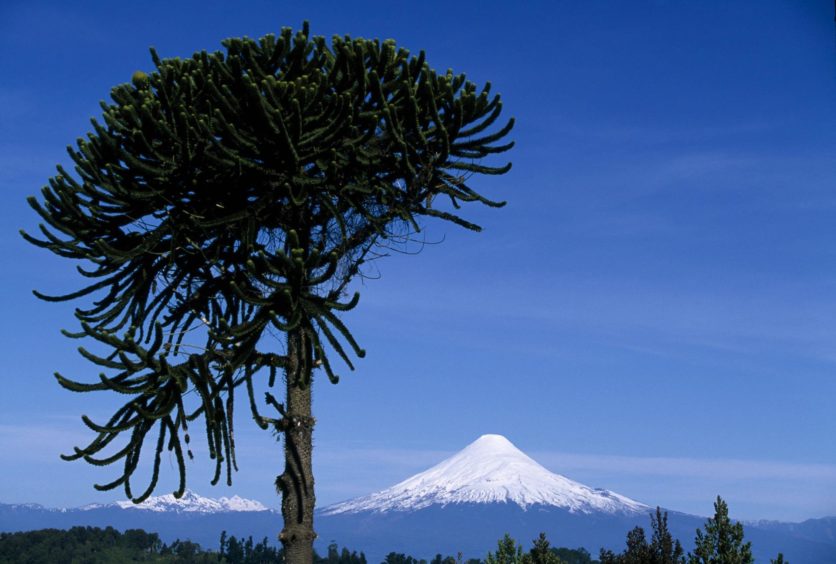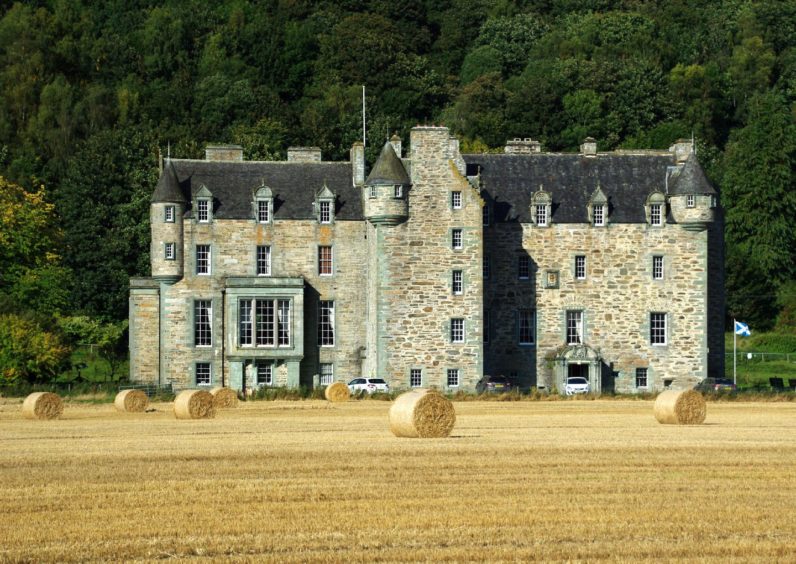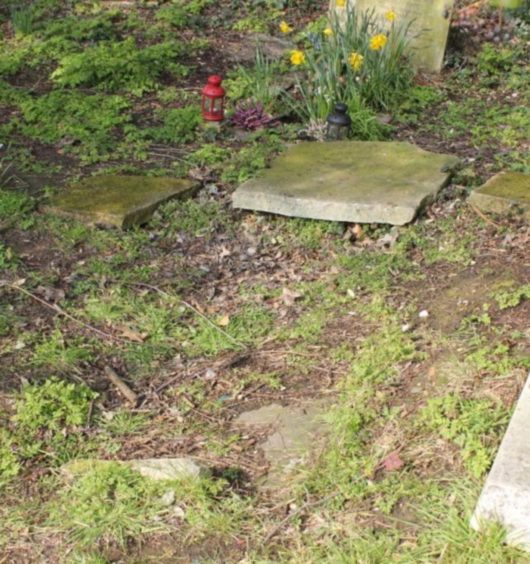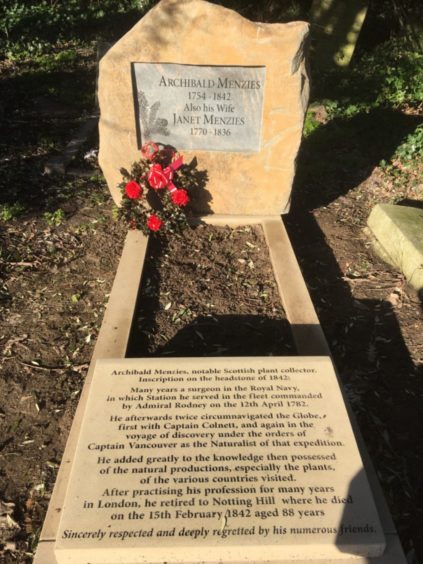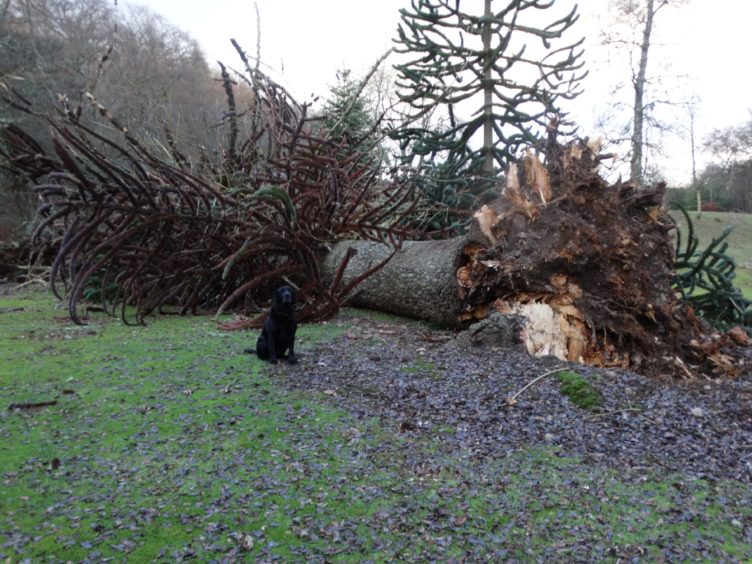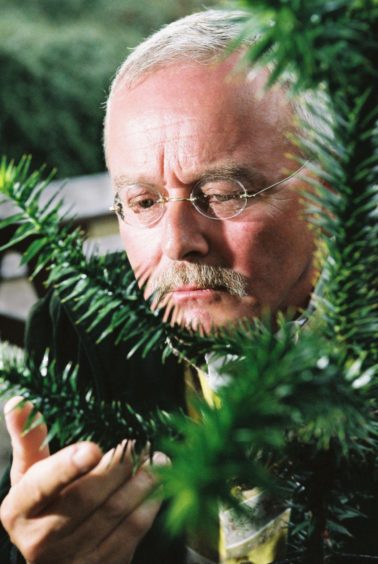The distinctively spiky monkey puzzle tree, now an endangered species, was introduced to the UK in 1795 by Perthshire plant collector Archibald Menzies. Gayle Ritchie explores Menzies’s life and legacy and looks at the future of the curious tree.
Dating back millions of years to the age of the dinosaurs, it’s thought the spiky green leaves of the monkey puzzle tree evolved to defend against long-extinct grazing animals.
This curious species, native to central and southern Chile and western Argentina and also known as the “Chile Pine”, is steeped in myth and legend.
It was first introduced to the UK in 1795 by Perthshire explorer and plant collector Archibald Menzies.
The story goes that Menzies, who was on an epic voyage of discovery with Captain George Vancouver, was served the seeds of the Chile Pine as part of a dessert while dining with the Viceroy of Chile.
He popped some seeds into his pocket and grew them on board a ship on the way back to Europe, returning to Britain with five healthy plants, the first seen in the country.
The species, which can live for 2000 years, got its name in 1850 after a landowner in England proclaimed: “It would even puzzle a monkey to climb that tree.”
It became hugely popular during the Victorian and Edwardian era and is now widely planted as an ornamental in parks and gardens.
Today, monkey puzzle trees, which have been around for more than 200 million years, are on an endangered species list and at risk of becoming extinct.
Perthshire plant collector
Archibald Menzies was born at Easter Styx in the parish of Weem near Aberfeldy in 1754.
One of nine children, he worked in the grounds of 16th Century Castle Menzies just outside Aberfeldy, home of the third Sir Robert Menzies who was known for his interest in fruit trees and new plant species.
Of the 21 employed in the gardens, more than half came from the Menzies clan, including Archibald’s four brothers, who remained gardeners all their lives.
As a boy, Menzies discovered Alpine mouse-ear on nearby Ben Lawers, Perthshire’s highest mountain.
He followed his older brother, Robert, to the Royal Botanic Garden in Edinburgh and there met Dr John Hope, at that time, Professor of Botany and Materia Medica.
Hope had an enormous influence on his future career and, at his suggestion, Menzies began to study medicine.
Menzies combined his career as a naval surgeon with the collection of plants and seeds for the eminent Sir Joseph Banks at Kew, discovering more than 400 species of plants previously unknown to science.
During a voyage with Captain George Vancouver from 1791 to 1795, he was the first Briton to visit the giant Californian redwoods and is famed for the discovery of the Douglas fir, the Sitka spruce and the monkey puzzle.
He even “discovered” the Californian poppy, which was one of the flowers embroidered on Meghan Markle’s veil at her wedding.
After the voyage, Menzies served with the Navy in the West Indies. He received the degree of MD at the University of Aberdeen in 1799.
On retiring from the Navy he became a doctor and surgeon at Notting Hill, London.
Menzies’s wife died in 1837 and the couple had no children.
Menzies himself died in London on February 15 1842 at the age of 88 and was buried in Kensal Green cemetery in London.
Research
Writer Fran Gillespie became fascinated by Menzies’s life story when she moved to the Perthshire village of Fortingall in the early 1980s.
“I already knew he was a well-known Scottish plant collector and was thrilled to discover he was born not far from where we lived,” she says.
“Not many local people I spoke to had ever heard of him and I thought it would be good if he became better known so I started doing some research with the hope of publishing an article about his life in a local community magazine.
“Several visits to the library in Perth and a trip to the archives at the Royal Botanic Garden in Edinburgh, where staff showed me the collection of letters from Menzies to his former mentor, the director, Sir John Hope, gave me enough material for the article, which was published in 1983.”
Fran left Perthshire in 1985 to work in the Middle East for 30 years, and when she returned, she was pleased to discover that not only was Menzies now commemorated in the Scottish Plant Collectors Garden at Pitlochry but also had a room dedicated to him in Castle Menzies, with a display about his life and work.
“He was beginning to be recognised on his own patch, so to speak!” says Fran.
A grave matter
During a visit to London in 2016, Fran decided to track down Menzies’s grave and pay her respects in the garden cemetery at Kensal Green.
She was horrified when she saw it. The headstone was in pieces, the inscription had worn away and the plot was overgrown with weeds and ivy.
“It lay in an unmaintained wilderness area along one side of the vast cemetery and I was appalled to discover that the grave was a weedy hollow scattered with fragments of a broken headstone and ledger, any inscription on the soft Portland stone long since worn away by pollution,” recalls Fran.
“There and then I decided that something had to be done about it.”
With help from members of the Menzies Clan Society, the Archibald Menzies Memorial Appeal was set up with a target of £6000 to have the grave restored and planted with perennial shrubs discovered by Menzies.
With the help of local estates, Menzies descendants worldwide, many members of the public and after putting on a fundraising concert at Castle Menzies, they raised just under £7000 for the transformation.
The new grave was made with natural stone from the Bolfracks Estate near Aberfeldy where Menzies was born. A natural mica schist boulder from Bolfracks was selected by Fran as the new headstone for the restored grave.
The grave was designed by Fran’s husband David Gillespie who is an architect and the work was carried out by Robertson Granite of Aberdeen.
“Although Menzies’s introduction of the monkey puzzle is of little importance in relation to his far more significant discoveries of commercially valuable trees such as the Sitka spruce and the Douglas fir, I chose to have a branch of the monkey puzzle engraved on the stone as it is such an instantly recognisable tree,” explains Fran.
“It was taken from a botanical illustration provided by a botanist at the Royal Botanical Garden in Edinburgh.”
The cost of the new grave – which is absolutely stunning – was slightly less than expected and the remaining funds are being used to pay for its maintenance.
“The wonderful lady who looks after the grave just sent me a photo with a special bouquet of berries and evergreen leaves she’d placed on it at Christmas,” says Fran.
“The lettering will need repainting every 10 years, and I want to keep a little back to cover that.”
Mythology and symbolism
It is said that speaking while passing a monkey puzzle tree will bring bad luck or cause you to grow a monkey’s tail.
There is an old Fenland belief that planting a monkey puzzle on the edge of a graveyard would prevent the Devil from entering during a burial.
This link with the Devil extends country-wide, with many even believing that the Devil lives in the monkey puzzle tree.
It’s possible this story was invented by concerned parents trying to stop their children climbing the spiky branches.
At risk
Monkey puzzle trees are being threatened in their native Chile by wild fires, grazing livestock and over-harvesting of their edible seeds.
Other pressures including climate change have seen their populations dwindle but the peculiar conifers can thrive in the Scottish climate; they grow incredibly well here.
That fact prompted the Royal Botanic Garden Edinburgh (RBGE) to fly in thousands of seeds from Chile to help safeguard their genetic diversity.
In 2017, more than 700 Andean monkey puzzle seedlings were being grown in a glasshouse in Edinburgh.
Around 150 of the trees were destined for the Chilean Rainforest Project at Benmore Botanic Garden near Dunoon, Argyll, which will eventually become the largest forest of monkey puzzles in cultivation, with plans for the plants to be distributed to a network of sites in the UK.
